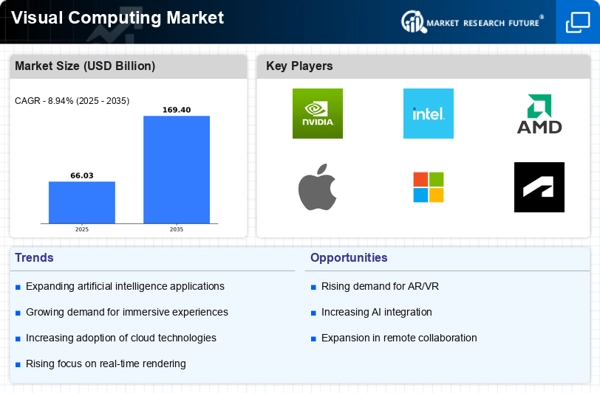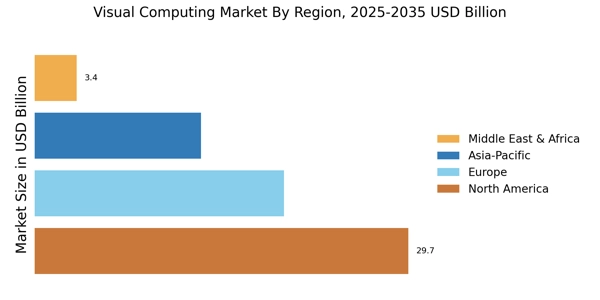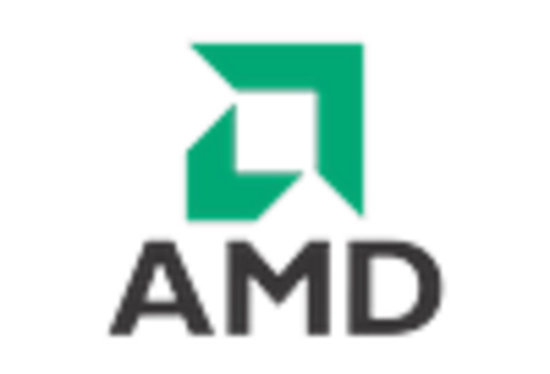Advancements in Graphics Processing Units
The Visual Computing Market is experiencing a surge in demand due to advancements in Graphics Processing Units (GPUs). These technological improvements enable more complex visual computations, enhancing the performance of applications in gaming, simulation, and design. The market for GPUs is projected to reach approximately 200 billion dollars by 2026, reflecting a compound annual growth rate of around 30%. This growth is driven by the increasing need for high-quality graphics and real-time rendering capabilities across various sectors, including entertainment and education. As industries continue to adopt more sophisticated visual computing solutions, the demand for powerful GPUs is likely to escalate, further propelling the Visual Computing Market forward.
Emergence of Augmented and Virtual Reality
The emergence of augmented reality (AR) and virtual reality (VR) technologies is reshaping the Visual Computing Market. These immersive technologies are being integrated into various applications, from gaming to training simulations, creating new opportunities for engagement and interaction. The AR and VR market is expected to grow significantly, with estimates suggesting it could reach over 300 billion dollars by 2025. This growth is indicative of a broader trend where businesses are leveraging immersive experiences to enhance user engagement and improve training outcomes. As the adoption of AR and VR continues to rise, the Visual Computing Market is likely to benefit from increased investment and innovation in these areas.
Growing Demand for High-Resolution Displays
The growing demand for high-resolution displays is a key driver in the Visual Computing Market. As consumers and businesses alike seek enhanced visual experiences, the need for displays that support higher resolutions, such as 4K and 8K, is becoming more pronounced. The market for high-resolution displays is projected to grow at a compound annual growth rate of approximately 25% over the next few years. This trend is particularly evident in sectors such as entertainment, where high-definition content is increasingly prevalent. Additionally, industries such as healthcare and design are adopting high-resolution displays for improved visualization and analysis. Consequently, the Visual Computing Market is likely to see substantial growth as it adapts to these evolving consumer preferences.
Increased Investment in Visual Computing Research
Increased investment in research and development within the Visual Computing Market is fostering innovation and technological advancements. Governments and private entities are recognizing the potential of visual computing technologies in various applications, leading to a rise in funding for research initiatives. This investment is expected to enhance capabilities in areas such as machine learning, computer vision, and graphics rendering. As a result, the Visual Computing Market is likely to witness a wave of new products and solutions that push the boundaries of what is possible in visual computing. The emphasis on research is not only driving technological progress but also creating a competitive landscape that encourages collaboration and knowledge sharing among industry players.
Expansion of Cloud-Based Visual Computing Solutions
The expansion of cloud-based visual computing solutions is transforming the landscape of the Visual Computing Market. As organizations increasingly migrate to cloud platforms, the demand for scalable and flexible visual computing resources is on the rise. This shift allows businesses to access powerful computing capabilities without the need for extensive on-premises infrastructure. The cloud visual computing market is anticipated to grow significantly, with projections indicating a potential market size of over 50 billion dollars by 2027. This growth is driven by the need for cost-effective solutions that can handle complex visual tasks, such as rendering and simulation. As cloud technologies continue to evolve, the Visual Computing Market is likely to benefit from enhanced accessibility and efficiency in visual computing applications.

















Leave a Comment